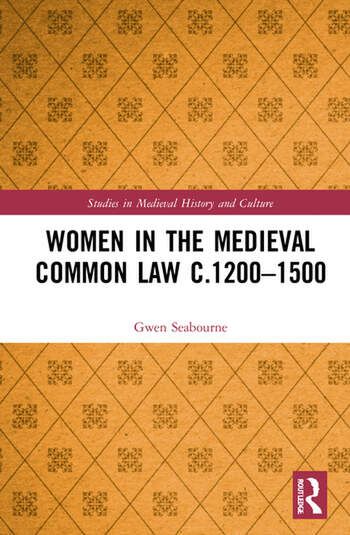
This book examines the view of women held by medieval common lawyers and legislators, and considers medieval women’s treatment by and participation in the processes of the common law. Surveying a wide range of points of contact between women and the common law, from their appearance (or not) in statutes, through their participation (or not) as witnesses, to their treatment as complainants or defendants, it argues for closer consideration of women within the standard narratives of classical legal history, and for re-examination of some previous conclusions on the relationship between women and the common law. It will appeal to scholars and students of medieval history, as well as those interested in legal history, gender studies and the history of women.